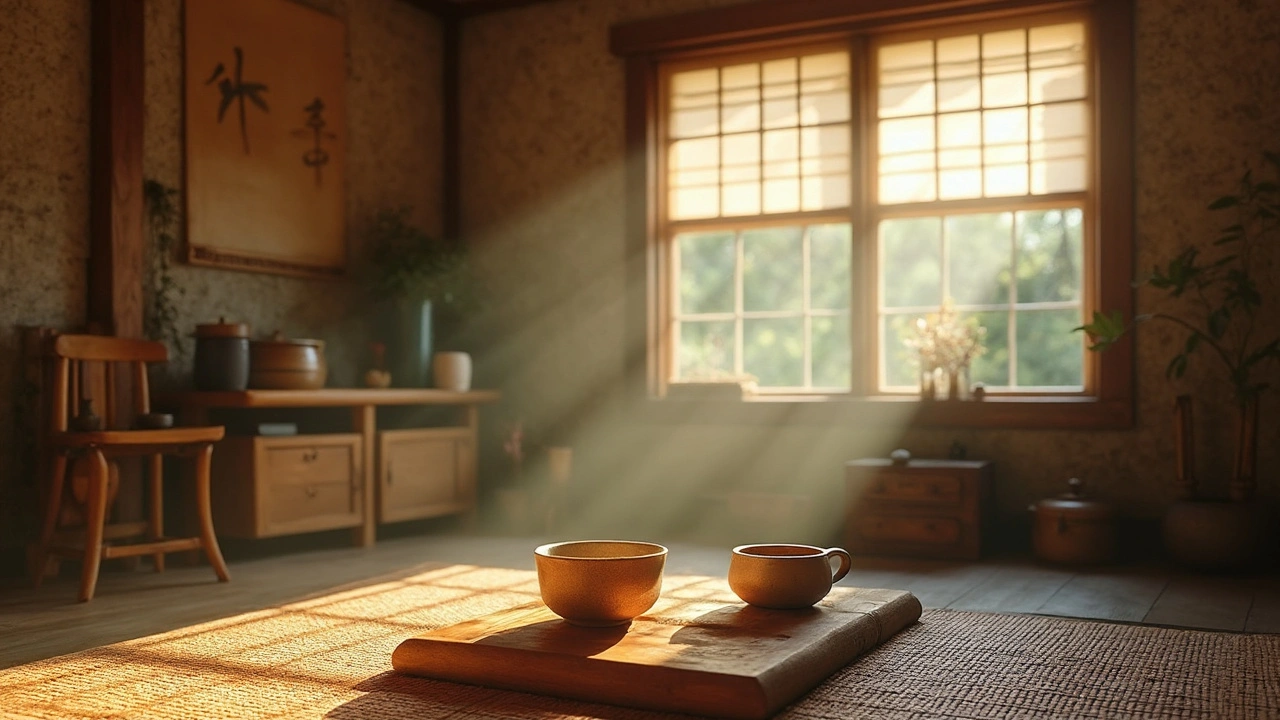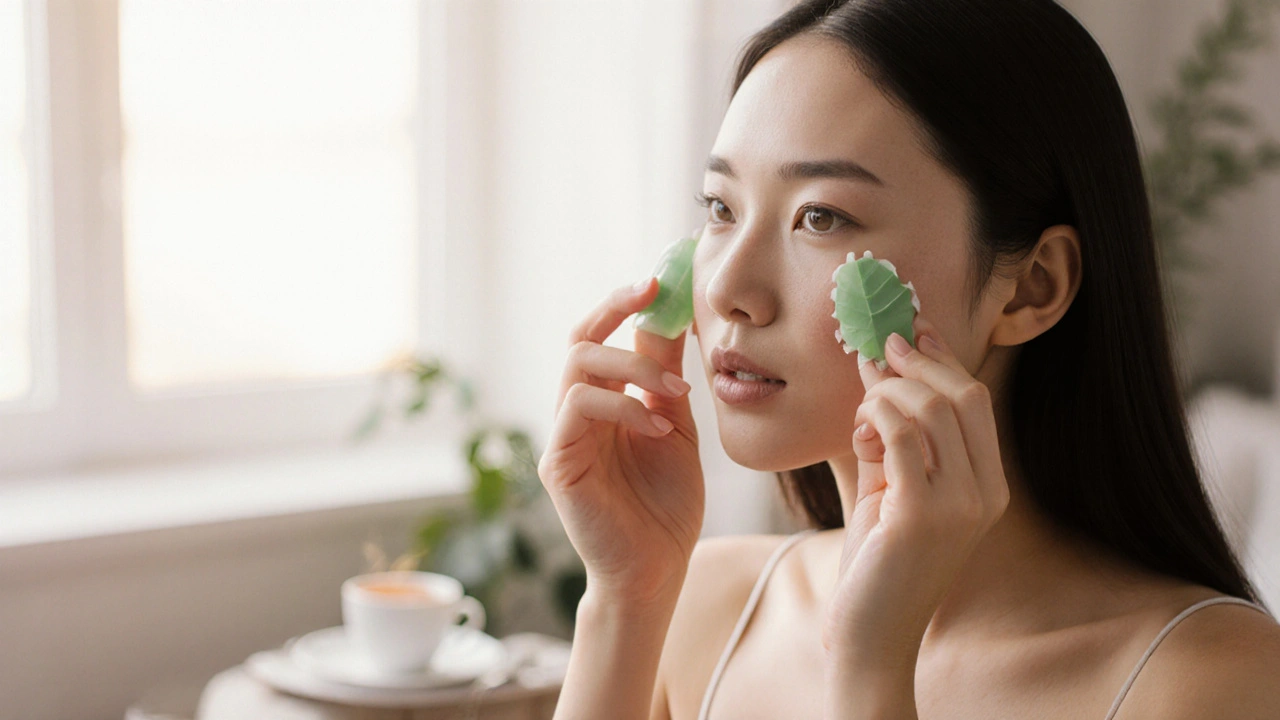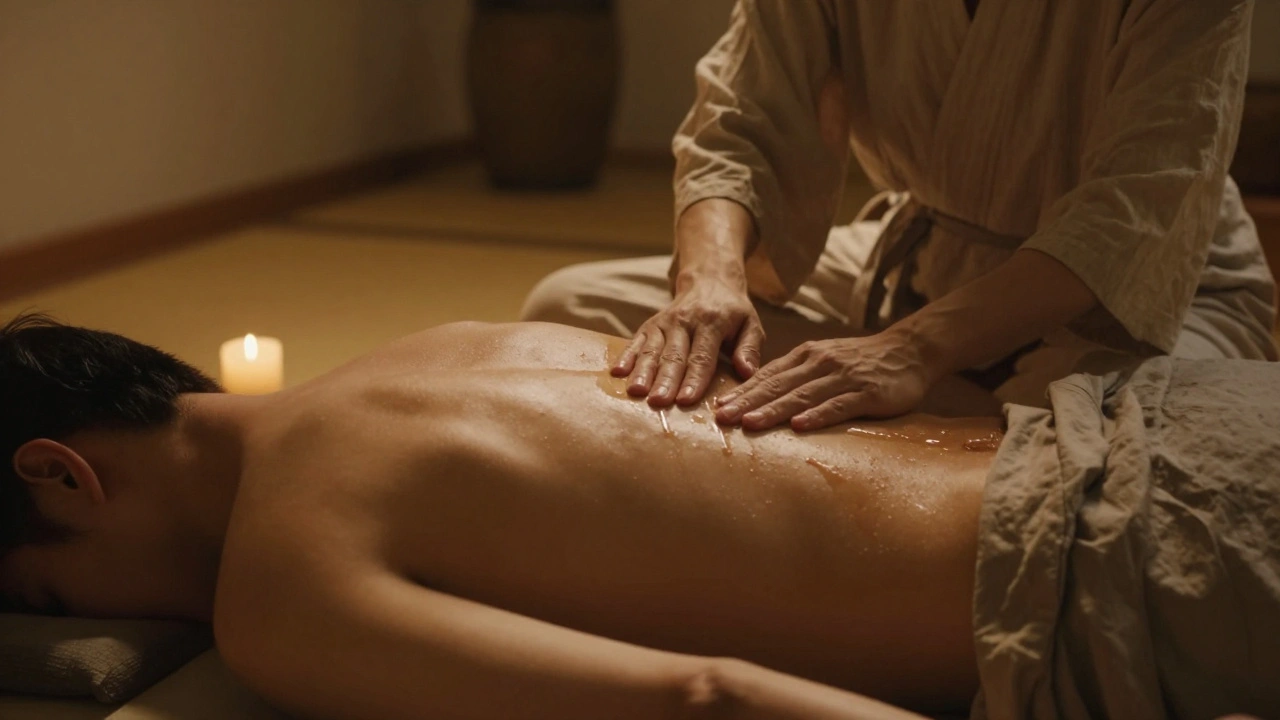Understanding Shiatsu Massage: The Science and Techniques

Ever heard of shiatsu massage and wondered what it's all about? Well, you're in the right place. Shiatsu is this cool Japanese massage technique that focuses on applying pressure to specific points on your body—kind of like acupuncture, but without the needles. It's all about channeling your inner energy, or 'qi,' and helping it flow better to promote health and relaxation.
The beauty of shiatsu lies in its simplicity and depth. By understanding where these pressure points are and how they connect with your body’s energy lines, shiatsu aims to balance and rejuvenate your entire system. Whether you're dealing with stress, muscle pain, or just want a little more harmony in your life, shiatsu's got something to offer. Curious about the science behind those pressure points and how they work? Stick around as we dig deeper!
- Introduction to Shiatsu Massage
- The Science of Pressure Points
- Techniques and Applications
- Benefits of Shiatsu
- Shiatsu in Holistic Health
- Tips for Incorporating Shiatsu at Home
Introduction to Shiatsu Massage
Shiatsu massage, often described as 'acupuncture without needles,' is a hands-on therapy that hails from Japan. Its origins are deeply rooted in ancient Chinese medicine and the concept of energy flow, or 'qi.' This technique emphasizes the balance and flow of energy through specific pathways in your body called meridians.
Practitioners of shiatsu massage use their fingers, thumbs, and sometimes even elbows or knees, to apply pressure to these energy points. The goal here is to dissolve energy blockages, improve circulation, and boost the body's natural healing processes. It's kind of like hitting the reset button on your body's energy system.
How It Works
The magic of shiatsu lies in its method. Unlike more vigorous massage types, shiatsu is all about gentle pressure and a very Zen-like approach. The practitioner uses their body weight rather than muscle strength, which makes the treatment feel more like a supportive hug than a deep tissue massage. This is perfect for folks who prefer a more gentle touch.
What's super interesting is how each meridian aligns with different organs and functions in your body. By working on a specific meridian, shiatsu can supposedly influence anything from physical pain to emotional stress.
Unlike Swedish massage, which is often focused on muscle relaxation, shiatsu is all about restoring balance and achieving harmony throughout your body and mind. It's not just a physical treatment but a holistic one that sees the body and mind as interconnected.
Popularity and Impact
Shiatsu has gained popularity worldwide, not just because of its effectiveness but also due to its non-invasive nature. It's often favored by those who seek a more natural approach to health and wellness. Whether you're battling chronic pain, stress, or simply want to maintain a balanced lifestyle, there's something shiatsu can offer.
In a world of constant hustle, shiatsu provides a moment to pause and reconnect with yourself. Many practitioners believe it's this pause that helps recharge your energy and rejuvenate your system.
Overall, shiatsu's charm lies in its simplicity and profound impact. People enjoy it because it's both a physical treatment and a mental retreat, offering a break from the chaos of daily life while simultaneously promoting health from the inside out.
The Science of Pressure Points
So, what's the deal with pressure points in shiatsu massage? Turns out, these are pretty fascinating little spots on your body. They align with the pathways called meridians, which are like highways for your body's energy, also known as 'qi'. When these pathways run smoothly, you're in good shape. But if something's off—like a traffic jam on your morning commute—you might start feeling tired or in pain.
Scientists have become super interested in how massage therapy works on these pressure points. They've figured out that stimulating them can actually activate your nervous system, releasing chemicals like serotonin and oxytocin. These guys are your happy hormones, basically your body's natural stress-busters and mood boosters.
Mapping Out Pressure Points
Here's a cool bit: specific points on your body are linked to different organs and functions. A well-known pressure point is called Hara. Located on your abdomen, it's thought to be the center of energy and helps with digestion and mental focus when targeted.
According to Dr. John McDonald, an expert in Oriental medicine, “By applying pressure to specific points, we can influence energy flow and bring about improved health.”
Finding the Right Spot
Finding the right pressure point isn't rocket science, but it does take practice. Many therapists use their thumbs or fingers in a rhythmic motion to activate these spots. The intensity is adjusted based on how you feel—it's supposed to be a bit intense, but never painful.
When it comes to holistic health, understanding these pressure points can be a game-changer. Not just for treating aches and pains, but for giving your overall well-being a boost. It's like upgrading your car's engine; everything just runs smoother.
Techniques and Applications
Shiatsu massage is all about using your hands, elbows, and sometimes even knees to apply pressure on various parts of the body. The main goal here is to stimulate the body's ability to heal itself by balancing the flow of energy, or qi. So, how exactly does it work?
Basic Techniques
First off, a lot of practitioners start by gently stretching and rotating your limbs. This helps in assessing what your body needs. Then, using fingers to apply pressure at specific pressure points along the body's meridians—a concept borrowed from traditional Chinese medicine.
- Thumb and Palm Pressure: Most of the work is done using thumb and palm pressure. This helps in targeting those deep-seated aches and releases tension.
- Joint Mobilization: Moving joints can improve flexibility and reduce stiffness, making you feel more relaxed.
- Rocking Movements: Gentle rocking can have a deeply calming effect and helps in synchronizing your body’s rhythms.
Applications and Benefits
Shiatsu stands out for its flexibility, as it can be adapted to suit anyone, from kids to the elderly. Whether you're aiming to relieve muscle pain or want holistic health benefits, this method can work wonders.
“Shiatsu is preventative as well as therapeutic, fostering a sense of well-being in the giver and receiver.” - As quoted on Shiatsu International Institute.
You’d be surprised to learn that studies reveal shiatsu can assist with stress, anxiety, and even digestive issues. If you’re one of those folks struggling to get good sleep, you might just find that regular sessions can improve sleep quality over time.
Shiatsu in Practice
Classic sessions last about an hour, often leaving people feeling balanced and invigorated. Depending on what's needed, a therapist might focus on different areas of the body, spending more time where there’s tension or blockages.
Some room for the stats fans out there: an interesting table shows how shiatsu has grown compared to other therapies.
| Year | Practitioners (Global) |
|---|---|
| 2010 | 50,000 |
| 2023 | 85,000 |
These numbers highlight the growing embrace of shiatsu as a holistic health solution worldwide. Given its benefits and flexibility, it's not hard to see why more folks are hopping on this bandwagon.

Benefits of Shiatsu
So, what exactly are the benefits of a shiatsu massage? Glad you asked! This traditional technique isn't just about relaxing; it packs a real boost for your health too. By targeting specific pressure points, shiatsu helps in several ways, aiming for holistic wellness.
Stress Reduction
Life's hectic, right? Shiatsu can be your ally in reducing stress. By stimulating the body’s parasympathetic nervous system, it helps lower stress levels, which can really improve your mood and overall mental health. You walk away feeling lighter and more balanced.
Pain Relief
If you're wrestling with pain—be it backaches, migraines, or something else—shiatsu can come to the rescue. By focusing on pressure points and muscle tension, it works to relieve pain and alleviate those stubborn aches you can't seem to shake off. Many folks swear by it for tackling chronic pain!
Improved Circulation
Shiatsu is sort of like your personal cheerleader for better blood flow. By gently moving and kneading your muscles, it stimulates circulation, which can enhance nutrient distribution throughout your body. Better circulation means your body's systems function more effectively—who wouldn't want that?
Enhanced Flexibility
Feeling a bit stiff? Shiatsu helps improve flexibility, keeping your muscles and joints happy and more elastic. Regular sessions might just have you feeling more limber and reduce your risk of injuries, especially if you're into sports or have a physically demanding lifestyle.
Table of Benefits
| Benefit | Description |
|---|---|
| Stress Reduction | Lowers stress levels and enhances mood |
| Pain Relief | Targets pain through pressure points |
| Improved Circulation | Enhances blood flow and nutrient distribution |
| Enhanced Flexibility | Aids in joint and muscle flexibility |
As shiatsu integrates into holistic health, these benefits contribute to an overall sense of well-being. Want to try it yourself? The journey to a calmer, healthier you might just begin with a few strategic presses and rubs!
Shiatsu in Holistic Health
Shiatsu massage isn't just about kneading out those stubborn knots; it's a key player in holistic health, where the focus is on the whole person, not just physical symptoms. Holistic health looks at body, mind, and spirit as interconnected. So, the idea is, if you tweak something in one area, it can ripple through to the others. That's where shiatsu steps in with its pressure techniques aimed at unblocking and balancing energy flow.
Connecting Mind and Body
Imagine your body as a bustling city. If there's a traffic jam at one spot, the whole system can get bogged down. Shiatsu works like traffic control, using finger pressure to ease areas of congestion along your body's energy pathways, or meridians, which helps keep everything running smoothly. This can lead to reduced stress levels, improved emotional balance, and even better sleep.
Dr. Andrew Weil, a well-respected figure in integrative medicine, points out,
"The key to wellness is to accept personal responsibility for your health and well-being. Shiatsu, as part of a holistic approach, empowers individuals to take charge of their healing process through its focus on self-awareness and energy flow."
Integrating Shiatsu into Daily Life
Practical applications of shiatsu can be as simple as doing some self-massage techniques or attending regular sessions. People often find that integrating these practices into their routine helps keep them centered and energized. A few tweaks here and there with a shiatsu session can do wonders for keeping your whole system in harmony.
| Benefit | Effect on Body |
|---|---|
| Reduces Stress | Promotes relaxation and mental clarity |
| Boosts Immunity | Enhances body's natural healing ability |
| Improves Sleep | Encourages deeper, more restful sleep |
With its emphasis on pressure points and energy flow, shiatsu fits snugly into any holistic health plan. It's an approachable way to engage with your health, making a real difference without needing complicated techniques or flashy gadgets. So why not give it a shot?
Tips for Incorporating Shiatsu at Home
Bringing the soothing practice of shiatsu massage into your home isn't as hard as you might think. The beauty of shiatsu is that you don't necessarily need to be a professional to get started. With a few basic tips, you can enjoy the relaxing benefits of this ancient art.
1. Understand the Basics of Pressure Points
At the core of shiatsu are the pressure points, also known as 'tsubo' in Japanese. These points align along your body's meridians, or energy lines. Daily practice for just 10 minutes can make a big difference in how you feel. For starters, focus on areas where you commonly hold tension, like between your shoulders or the base of your skull.
2. Use Your Fingers, Thumbs, and Palms
While professional therapists use a variety of techniques, you can begin by applying gentle pressure using your fingers, thumbs, or palms. Experiment with different pressures and see how your body responds. Start by pressing for a few seconds, releasing, and moving to another point. Consistency is key, so find a routine that feels comfortable for you.
3. Create a Relaxing Environment
Setting the right mood enhances your shiatsu experience. Choose a quiet space, use dim lighting, and perhaps add some soft music in the background. Add some essential oils or a diffuser for a calming aroma to help you unwind.
4. Follow a Guided Routine
If you're a beginner, you might find it helpful to follow a guided shiatsu routine. Several online tutorials offer free videos that can walk you through various techniques. Here’s a simple sequence to get you started:
- Sit in a comfortable position and take a few deep breaths.
- Press the pressure points on your temples using your index fingers in a circular motion.
- Move to your neck, applying gentle pressure downward along each side.
- Focus on the area between your thumb and index finger; hold and gently knead for relief.
5. Consistency and Patience
Like any wellness practice, consistency pays off. Start small with a few sessions each week and pay attention to how your body feels. Remember, the goal is relaxation, so take your time and enjoy the process. Soon enough, you might notice reduced stress and improved overall well-being.
By integrating these shiatsu techniques into your home routine, you'll be tapping into a centuries-old practice that blends perfectly with modern living for a healthier, more balanced life.





